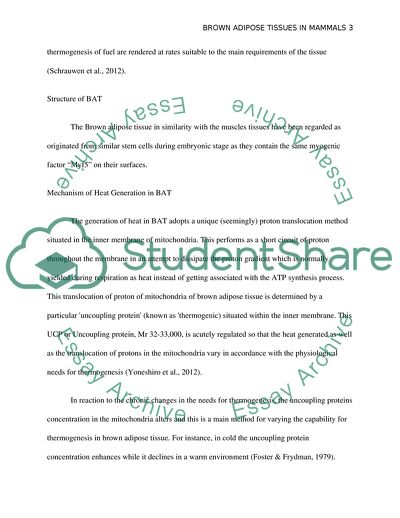Cite this document
(Brown Adipose Tissues in Mammals Coursework Example | Topics and Well Written Essays - 2000 words, n.d.)
Brown Adipose Tissues in Mammals Coursework Example | Topics and Well Written Essays - 2000 words. https://studentshare.org/psychology/1821349-explain-the-function-of-brown-adipose-tissue-in-mammals-particularly-the-contribution-of-the-cardiovascular-system-to-this-function
Brown Adipose Tissues in Mammals Coursework Example | Topics and Well Written Essays - 2000 words. https://studentshare.org/psychology/1821349-explain-the-function-of-brown-adipose-tissue-in-mammals-particularly-the-contribution-of-the-cardiovascular-system-to-this-function
(Brown Adipose Tissues in Mammals Coursework Example | Topics and Well Written Essays - 2000 Words)
Brown Adipose Tissues in Mammals Coursework Example | Topics and Well Written Essays - 2000 Words. https://studentshare.org/psychology/1821349-explain-the-function-of-brown-adipose-tissue-in-mammals-particularly-the-contribution-of-the-cardiovascular-system-to-this-function.
Brown Adipose Tissues in Mammals Coursework Example | Topics and Well Written Essays - 2000 Words. https://studentshare.org/psychology/1821349-explain-the-function-of-brown-adipose-tissue-in-mammals-particularly-the-contribution-of-the-cardiovascular-system-to-this-function.
“Brown Adipose Tissues in Mammals Coursework Example | Topics and Well Written Essays - 2000 Words”. https://studentshare.org/psychology/1821349-explain-the-function-of-brown-adipose-tissue-in-mammals-particularly-the-contribution-of-the-cardiovascular-system-to-this-function.


